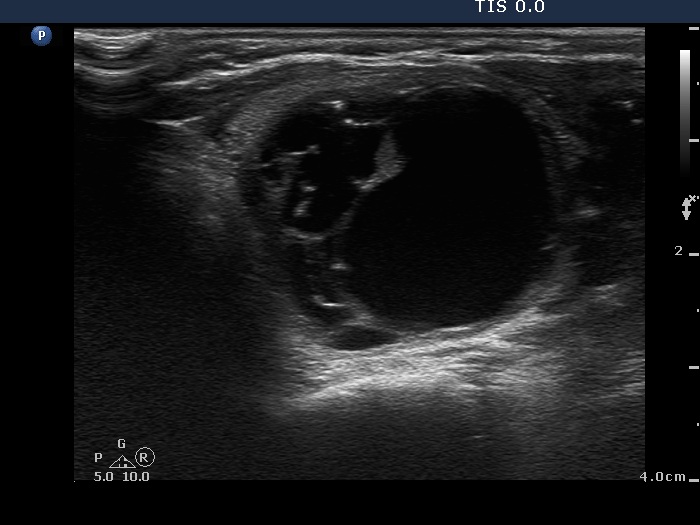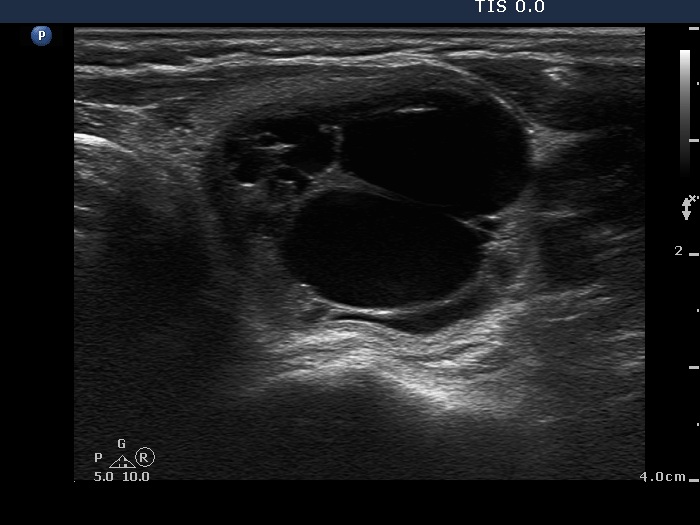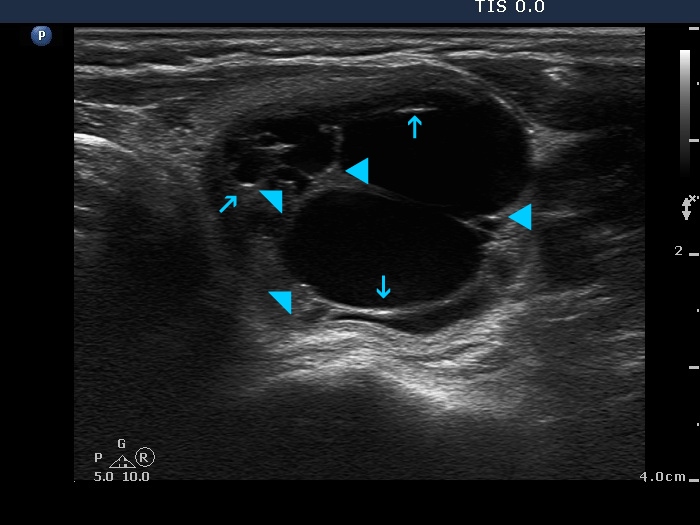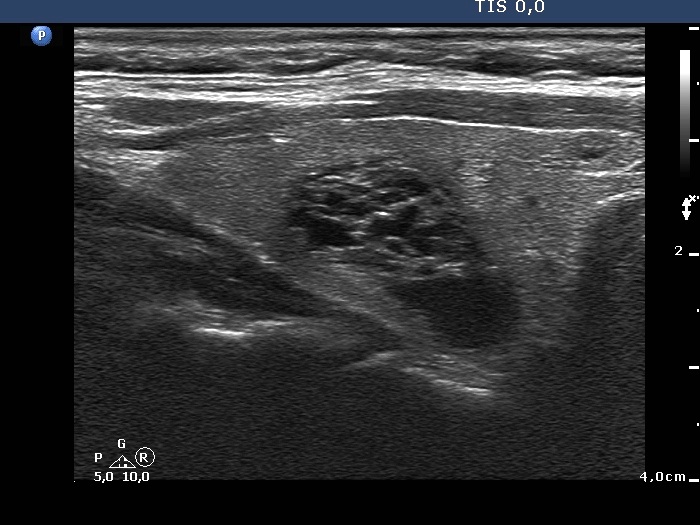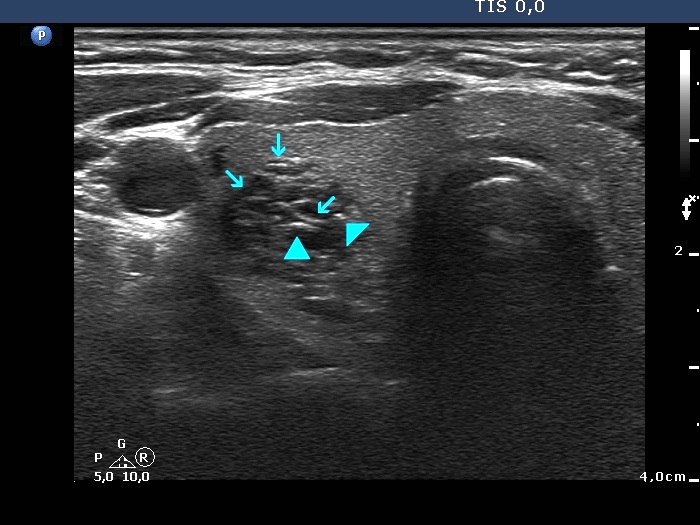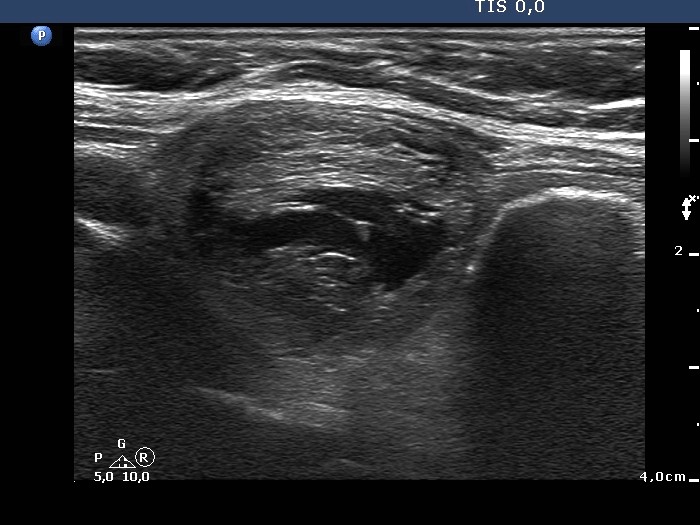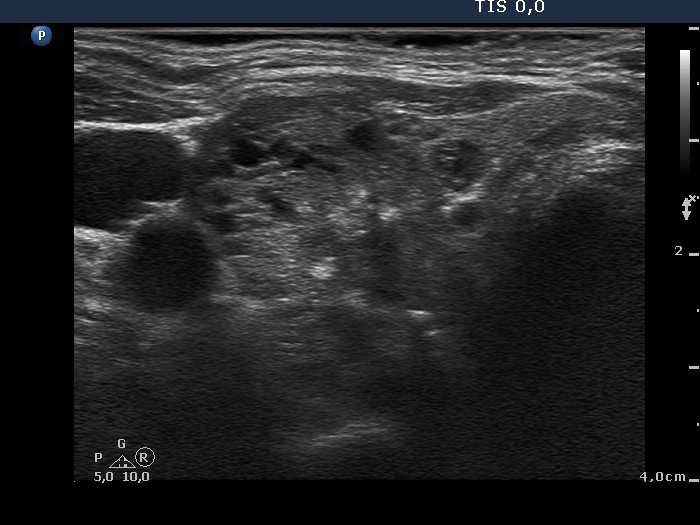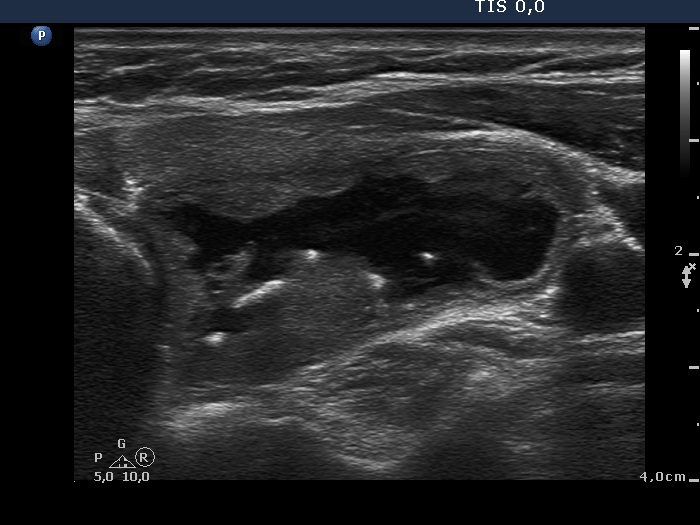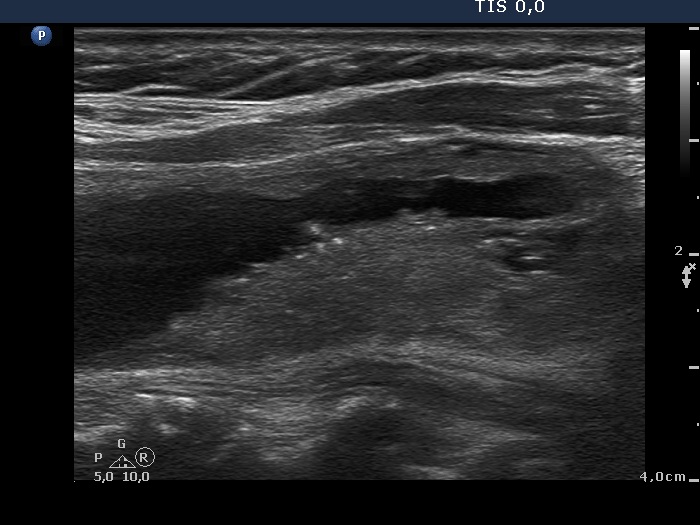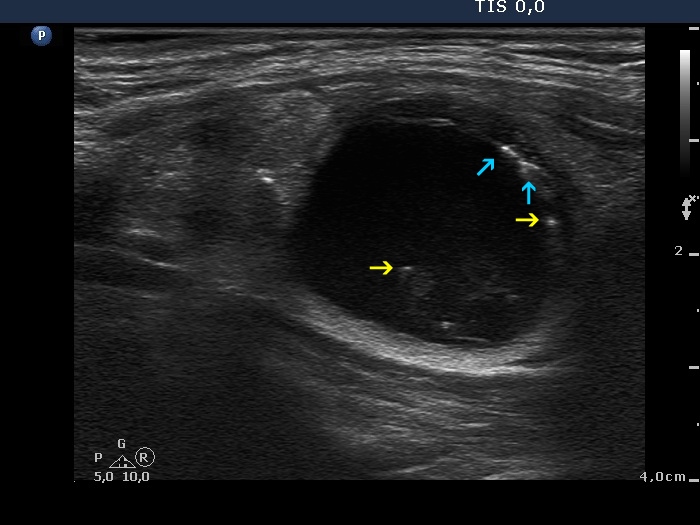|
|
|||||||||||||||||||||||||||||||||||||||||||||||||||||||||||||||||||||||||
Selected topics - intranodular hyperechogenic figures - Table 3. Cystic back wall figures |
|||||||||||||||||||||||||||||||||||||||||||||||||||||||||||||||||||||||||
|
A punctate echogenic focus is a round bright granule. The size of this figure is less than 1 mm, usually is around 0.5 mm. A lesion which has typical punctate echogenic foci (microcalcifications) almost always presents less bright granules, too. The latter might be non-typical forms of microcalcifications or non-specific granulations. In fact the identification of punctate echogenic foci (including microcalcifications) is a matter of exclusion other forms of hyperechogenic figures, i..e comet-tail artifacts, connective tissue and posterior back wall enhancement. All of the latter have additional features lacking in the event of punctate echogenic foci. Nevertheless, it means that atypical presentations of these figures might mimic punctate echogenic foci including microcalcifications. |
|||||||||||||||||||||||||||||||||||||||||||||||||||||||||||||||||||||||||
|
|||||||||||||||||||||||||||||||||||||||||||||||||||||||||||||||||||||||||

